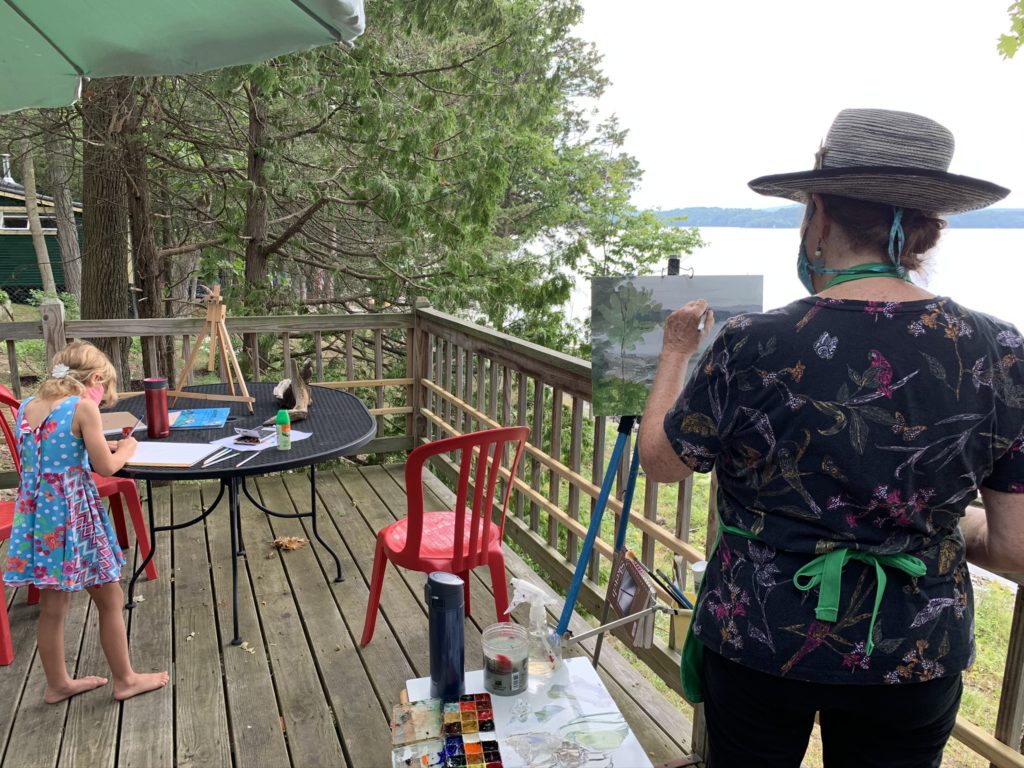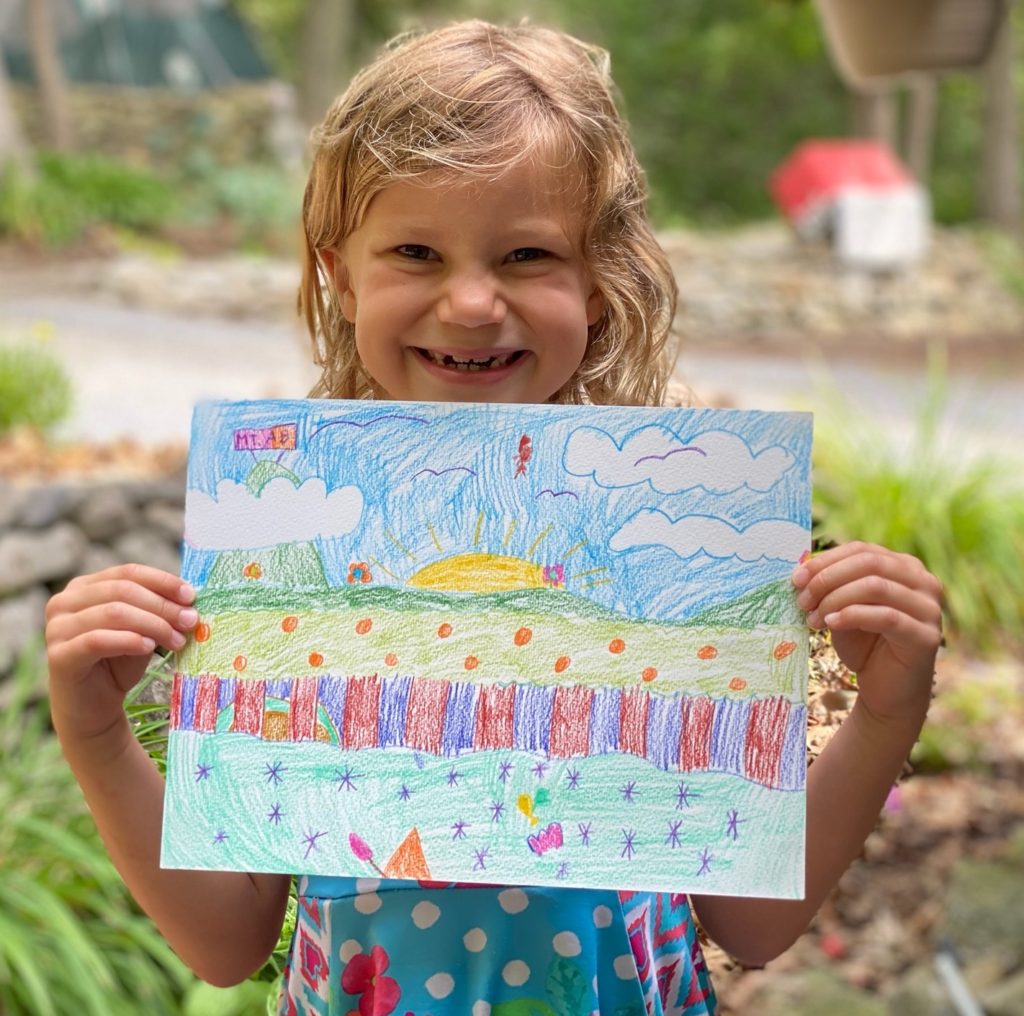- provide art materials and a space to use them where mess making won’t be a concern. It’s that simple. Children love to make marks and explore different media. As they grow they want to be able to represent things. Having supplies and a place to use them is usually enough.
- Stay in the space and use the materials yourself. You can simply engage in mark making (doing abstract art) if representational art is uncomfortable for you. You don’t have to draw or paint anything in particular if you don’t want to, but it helps if you are “into” what you are doing. Your involvement is like a match that starts a fire. Once it’s started, you don’t need the match anymore. Just let then see how to handle the supplies.
- Together you can think of ways to find answers. If you are asked questions and you don’t know the answers, simple tell them you don’t know. Then try to find out the answers together. You can Google anything for a variety of answers (and it’s good to get a variety because each one will have a different slant). If the child has the attention they can engage in this process with you. They will learn that they can find the answers to their basic art questions.
- Comment periodically on what your young artist has done. You don’t need to know about art and neither do they. Trust me, if you describe what they have done and do so with enthusiasm, they will be very satisfied. Ex: “Well I’ll be! Look at this red line that squiggles all the way up the paper!” (pause and look at them, usually you’ll see pride) “It’s so thick, like it really means business… ” (pause again allowing the person to embellish on your statement if they want to – don’t push it, but you will be surprised by the stories that come with most lines.
- Don’t impose a direction on them. Even if they ask for one, try to lead them into a process of inquiry… It’s a process of letting them find their direction in the moment. It will change as time passes.
- Please remember that talent is not relevant. Being comfortable with the creative process has life-long value. I believe that everyone, with the exception of those with certain real handicaps, can learn the fundamentals of drawing and painting. Just as we do not teach math and reading only to children who demonstrate unusual talent or interest in those things, we can do the same with art. Yes, talent may separate the future mathematicians and authors form those who use math and writing with competence to lead a functional life. They can also learn perspective, to draw a portrait, etc. Being happy and comfortable with what they create is the foundation to this. So cheer them on and forget about talent.

A few weeks ago, I did a painting demonstration for some young visitors. As I worked, I explained what I was doing and why. I told the children that whenever they wanted, they could begin to make their own paintings. I was clear that I paint the way I do because of what interests me, but that they would naturally have different interests and their paintings would be very different.

The event was delightful. Here is Audrey with her joyful landscape made with colored pencils. Note the kayak at the bottom seen just as it is when you are paddling. She had climbed Mt. Abe the day before. We can see it from the deck. Note how she shows it’s peak rising above the clouds. She made a magical happy plein air landscape that captures both her essence and the essence of the scene. Bravo!

5 Responses to Staycation Art #16: How to Teach Art to Children Even if You Are Not An Artist